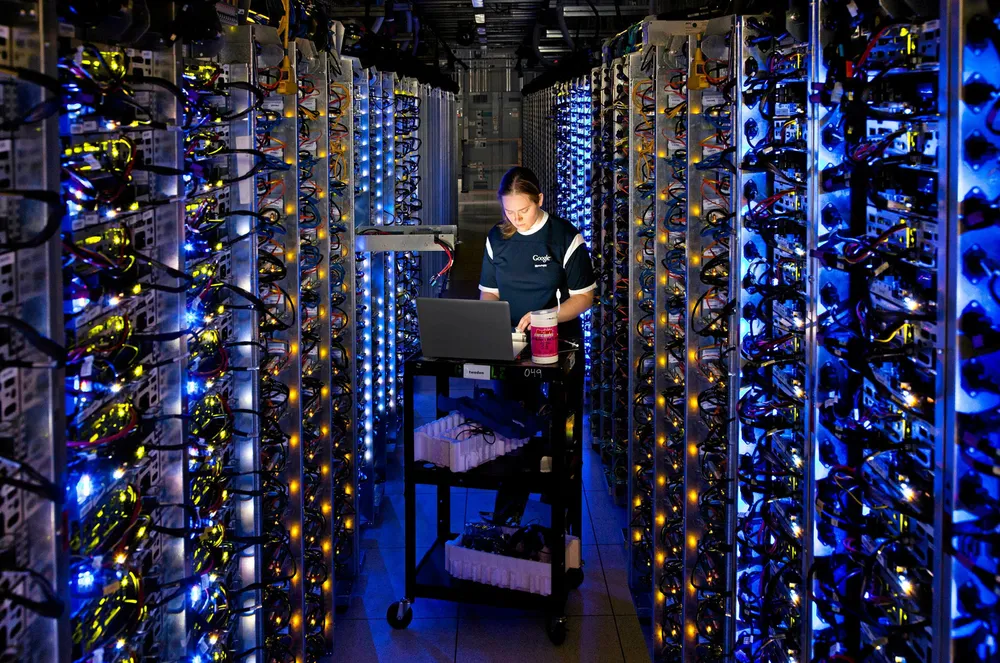CEO claims BP 'one of two or three' energy giants that can cope with global 'hyperscaler' demand
Has there ever been a better time to be an integrated energy company, wonders BP's Murray Auchincloss

BP is one of two or three companies able to meet the voracious and increasingly globalised demand for low carbon energy presented by the emergence of the so-called hyperscalers, according to CEO Murray Auchincloss.
The London-headquartered oil major has been trying to make its portfolio more returns-focused since Auchincloss took the helm in February, but analysts taking part in an earnings call on Tuesday heard that the company is looking to follow its customers as well as satisfy its shareholders.
"We're a corporation that has an upstream business, a big customers business, and obviously a trading business. To durably compete in the long term, we need to follow the patterns of our customers. So not only do we need to provide hydrocarbons, but we need to lighten the carbon footprint through time, bringing in electricity, biogas, biofuels and such," Auchincloss said.
"The direction of travel for our business remains the same. What's different is we will be very, very returns-focused making sure that the new businesses compete on a competitive level with the historic businesses for scarce capital," he said.
Low carbon investments making the cut have included offshore wind projects in the German North Sea acquired last year, for which an initial signature bonus payment accounted for much of a $900m capex outlay in the third quarter.
Auchincloss also highlighted the full acquisition of former solar PV joint venture Lightsource BP, describing it as “a tremendous vehicle to supply us with green electrons for marketing and to combine with trading and our own portfolio".
'Only two or three can do it'
Some of the analysts wanted to gauge BP’s response to the emerging power needs of the so-called hyperscalers — builders of gigascale data centres providing AI and cloud computing to millions of users.
"I think if you're a integrated energy company. If you've got the ability to bundle natural gas with solar with wind, if you're able to create hedging shapes for them, you're an ideal shop," Auchincloss responded.
"There will be some companies that will want to go into that space without being able to provide the lower carbon aspect. There'll be many companies that can't provide global reach," he commented.
"I think there are only two or three companies in the world that will actually be able to provide that at scale in lots of different countries,
"So that's why, I am quite excited about the future for the business, and why I'm committed to continuing to transition it, because our customers — and clearly hyperscalers are one of the bigger customers for energy moving forward — need base load. They need reliable energy that will decarbonise over time."
Auchincloss also said he sees hyperscalers as confined to the US so far, but expects them to start proliferating in the UK and Europe and other parts of the world “a little bit later”.
“If you want to remain competitive in AI, you'll have to do that,” he said.
Deals afoot
BP is getting busy in the fast-moving world of hyperscaler demand.
“Look, we're in conversations with all of them. They are obviously looking for energy and they would like it to be as decarbonised as possible. We're working with them on that,” he said. “We've done some deals that are quiet, and over time, we may publicise some of these. It’s a very, very interesting area."
Going forward, Auchincloss said BP will continue to follow demand for lower carbon sector, but following a strategy that states that new renewables will be “capital light” and “returns focused”
“You'll hear us focused on cash flow, generation and growth through the decade, from a balance of the portfolio, a continued commitment to transition, but with quality and returns top of mind.
Among the company's standout low carbon assets, Auchincloss also highlighted Lightsource BP.
He described a company that "has already brought 10GW to market so far, has a mature generation pipeline of 40-50GW, plus a 3GW battery pipeline, with one project up and running in Australia and another coming online in the UK".
Lightsource BP is present in 19 countries and has the capacity to develop 3-5GW a year and continue delivering double digit returns, Auchincloss said.
Too hungry?
Some of the demand also appears to spilling over into the natural gas sector, where transition-minded oil and gas companies like TotalEnergies and BP have been including combined cycle gas turbines or gas-fired generation with carbon capture and storage among their portfolio projects.
Auchincloss did little to dampen speculation that demand from hyperscalers could ultimately impact the natural gas sector, where BP currently has about 22 trillion cubic feet of untapped resource tied up.
“I'm pretty optimistic on natural gas prices through the decade," he said, describing a situation where the US is currently producing about 100 billion cubic feet per day.
"With the hyperscalers driving crazy demand into natural gas right now, could we could see something like another 10bcf a day of demand by the end of the decade? It's hard to predict right now, but there is crazy, crazy demand coming out for baseload.
"We see very high demand for natural gas as we move through the decade, which makes us incredibly optimistic about our 22tcf of natural gas that is sitting there waiting for a price response.”
(Copyright)